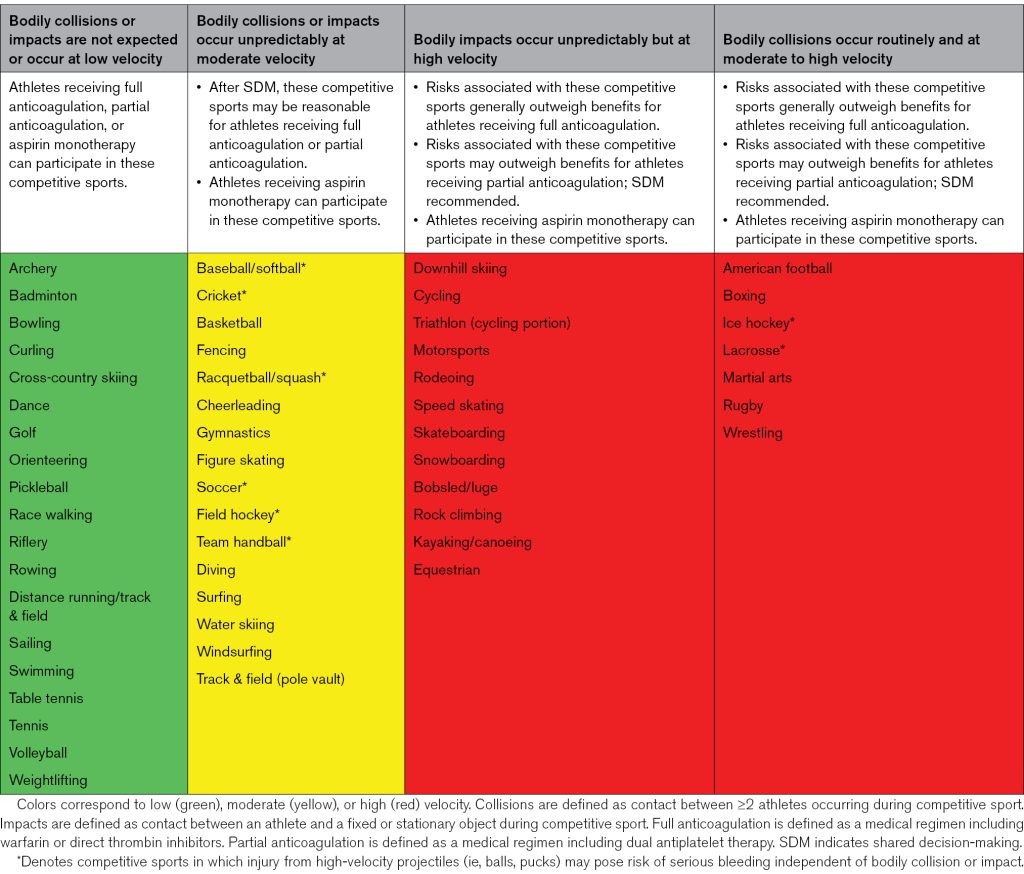Aortic dissection is not always caused by a connective tissue disorder. In fact, dissection from a blunt force is a major cause of death in auto collisions.
For example, I have a neighbor with no prior history of aortic disease who dissected when he fell off the roof of a house he was working on.
And some athletic activities have more risk of collision than others, and – despite a lack of data – a consensus is that people with aortic aneurysms should avoid high impact sports.
The 2025 Guidelines on competitive athletes and cardiovascular disorders address this topic.
The Guidelines state that “trauma during competitive sports participation can be categorized as collisions, or contact between athletes (eg, American-style football tackle); impacts, or contact between an athlete and a fixed or stationary object (eg, a cyclist or skier hitting a tree); and projectile impacts, or contact between an athlete and a high-velocity projectile (eg, a baseball batter struck by a fastball).”
And while there is a high likelihood of impact in American football, some positions have a higher likelihood of collision than others: a linesman versus a punter.
And other sports have the risk of an impact at a high speed, such as downhill skiing or cycling. But both can be done at low speeds with less risk of hitting trees (skiing a bunny hill) or cars (biking at low speed on a rail to trail bike path).
In my decades as a group riding cyclist, I broke two collar bones from separate crashes, a not unexpected thing for higher speed group rides. I now cycle mostly alone or in smaller groups of cyclists I trust.
Still other sports have the occasional risk of impacts at moderate velocity such as soccer players or surfers.
This same impact criteria applies to people who have a post-repair mechanical aortic valve and take blood thinners.
As to specific sports and a specific person with aortic disease, the key is risk assessment and shared decision making.
For example, one case study involved a college wrestler with a bicuspid aortic valve and a mild dilation. The patient and care team decided to allow him to continue wrestling but with more frequent scanning.
For a deeper dive, here is a link to the Guidelines.
https://www.ahajournals.org/doi/10.1161/CIR.0000000000001297
And here is a link to the 2022 college wrestler case study.
https://www.sciencedirect.com/…/pii/S2666084922006969

